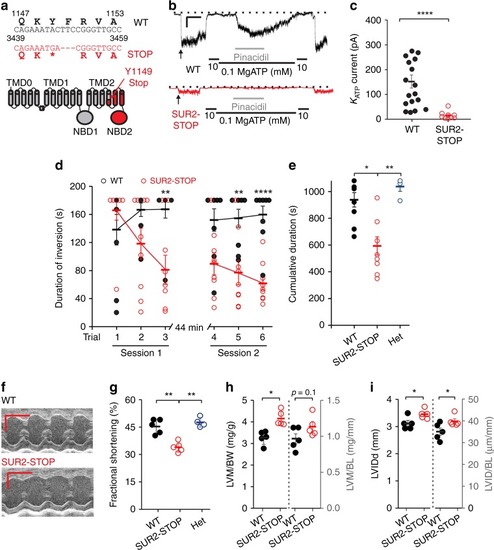- Title
-
ABCC9-related Intellectual disability Myopathy Syndrome is a KATP channelopathy with loss-of-function mutations in ABCC9
- Authors
- Smeland, M.F., McClenaghan, C., Roessler, H.I., Savelberg, S., Hansen, G.Å.M., Hjellnes, H., Arntzen, K.A., Müller, K.I., Dybesland, A.R., Harter, T., Sala-Rabanal, M., Emfinger, C.H., Huang, Y., Singareddy, S.S., Gunn, J., Wozniak, D.F., Kovacs, A., Massink, M., Tessadori, F., Kamel, S.M., Bakkers, J., Remedi, M.S., Van Ghelue, M., Nichols, C.G., van Haaften, G.
- Source
- Full text @ Nat. Commun.
|
SUR2-STOP mice exhibit cardiac dysfunction and fatigability. |
|
Hypotolerism and decreased locomotor behavior in SUR2-STOP zebrafish larvae. |
|
Systolic dysfunction and enlarged heart size in SUR2-STOP zebrafish. |



